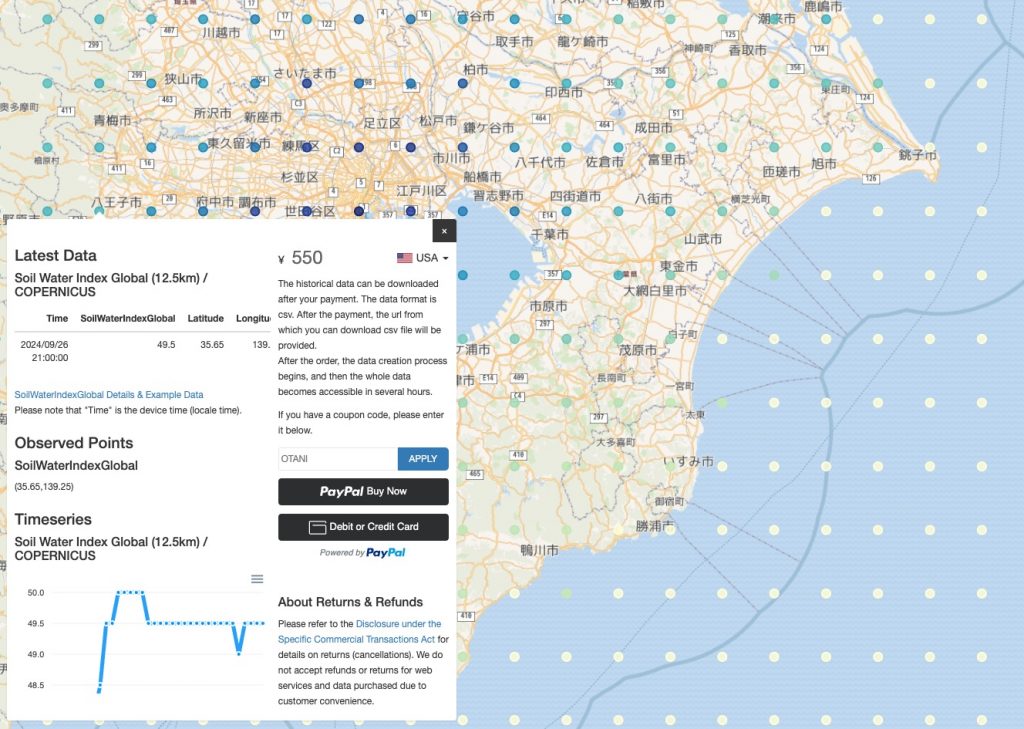Burnt Area is based on the data from Copernicus project in Europe. This page purposes to explain detailed information for the downloadable data.
Example Dataset
Please download a free example dataset and use it in you app or analysis.
URL Expiration
All downloadable URLs expire in 90 days after your order.
Temporal Resolution and Update
The temporal resolution is daily. Also, generally, the latest data is usually updated within 12-24 hours after the latest Copernicus data is published.
Data Format
The default format is csv where no single/double quotation marks are used in the file. The geojson format is available, changing the file extension in the provided url from “csv” to “geojson.” Note that the geometry of geojson format is Point.
Example
Column Names / Property Names
| Names | Description | Physical unit / classes | Physical min | Physical max | Digital max | Scaling | Offset |
| time | Datetime the Copernicus file is published (GST). | YYYY-MM-DD hh:mm:ss | – | – | – | – | – |
| lat | Latitude | Decimal | -90 | 90 | – | – | – |
| lon | Longitude | Decimal | -180 | 180 | – | – | – |
| BurntArea | Day of burn in the year | days | 0 | 366 | – | – | – |
Note that “Some specific values are used: -1 for missing (no-data) pixels, -2 for water pixels.”
Further Details on Burnt Area Data
For further details, concerns such as satellite sensors and data accuracy, please refer the Copernicus pages.
Burnt Area 2023 – present (raster 300 m), global, daily – version 3.1
